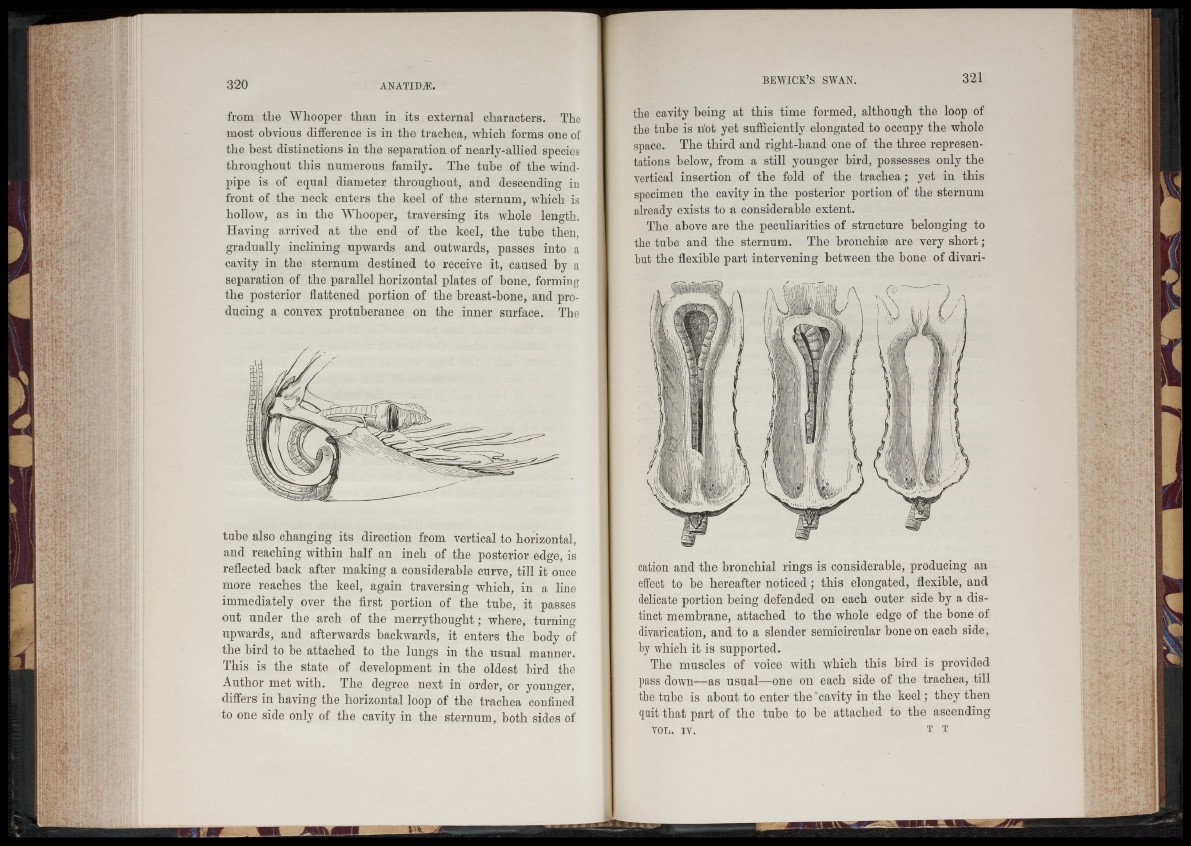
from tlie Whooper than in its external characters. The
most obvious difference is in the trachea, which forms one of
the best distinctions in the separation of nearly-allied species
throughout this numerous family. The tube of the windpipe
is of equal diameter throughout, and descending in
front of the neck enters the keel of the sternum, which is
hollow, as in the Whooper, traversing its whole length.
Having arrived at the end of the keel, the tube then,
gradually inclining upwards and outwards, passes into a
cavity in the sternum destined to receive it, caused by a
separation of the parallel horizontal plates of hone, forming
the posterior flattened portion of the breast-bone, and producing
a convex protuberance on the inner surface. The
tube also changing its direction from vertical to horizontal,
and reaching within half an inch of the posterior edge, is
reflected hack after making a considerable curve, till it once
more reaches the keel, again traversing which, in a line
immediately over the first portion of the tube, it passes
out under the arch of the merrythought; where, turning
upwards, and afterwards backwards, it enters the body of
the bird to be attached to the lungs in the usual manner.
This is the state of development in the oldest bird the
Author met with. The degree next in order, or younger,
differs in having the horizontal loop of the trachea confined
to one side only of the cavity in the sternum, both sides of
the cavity being at this time formed, although the loop of
the tube is n’ot yet sufficiently elongated to occupy the whole
space. The third and right-hand one of the three representations
below, from a still younger bird, possesses only the
vertical insertion of the fold of the trachea ; yet in this
specimen the cavity in the posterior portion of the sternum
already exists to a considerable extent.
The above are the peculiarities of structure belonging to
the tube and the sternum. The bronchia} are very short;
but the flexible part intervening between the bone of divarication
and the bronchial rings is considerable, producing an
effect to be hereafter noticed; this elongated, flexible, and
delicate portion being defended on each outer side by a distinct
membrane, attached to the whole edge of the bone of
divarication, and to a slender semicircular bone on each side,
by which it is supported.
The muscles of voice with which this bird is provided
pass down—as usual—one on each side of the trachea, till
the tube is about to enter the cavity in the keel; they then
quit that part of the tube to be attached to the ascending
VOL. iv . t T